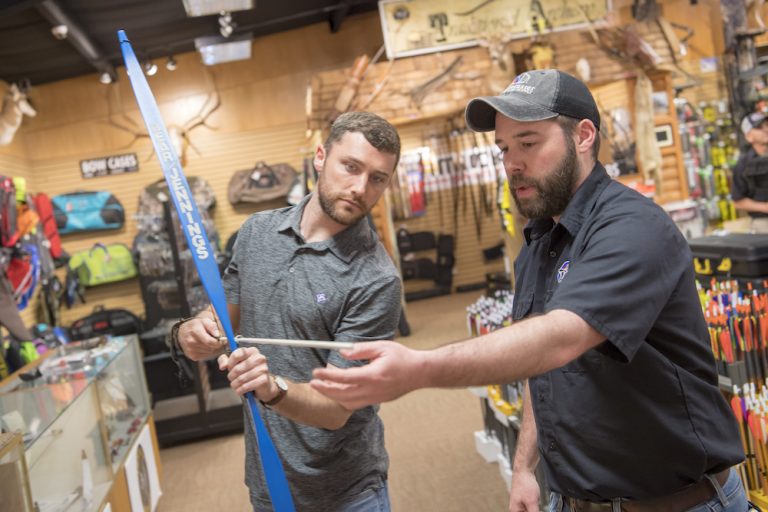Retail
How to Talk to First-Time Customers Effectively
Don’t assume anything about a new customer’s skill level. Here’s how to ask the right questions so you can tailor the best service.
Photo Credit: ATA
As a retailer, you know every customer is different and every archer has unique experiences and needs. Knowing that, you should still begin your interactions with every new customer with the same approach. When a customer walks into your retail shop and asks for help buying a new bow, don’t make assumptions about their skill level. Assume every person you interact with needs the same level of instruction until you’ve spoken with them in detail. Ask questions to gauge whether the customer is new to archery or has some experience, and use their answers to steer the conversation.

Make sure you take the time to explain every part of the archery process if necessary. Photo Credit: ATA
When talking to a new customer, it can be easy to get wrapped up in the specific details of the gear and neglect to explain some of the fundamentals of archery they might not yet understand. For example, you might ask a new customer if they know their draw length. When they reply that they don’t, you might then measure and determine their draw length, and then begin suggesting the best bows for them. But in this scenario, it’s easy to miss that some customers don’t know exactly what draw length is. Strive to always explain the “why” to the customer. People feel more comfortable asking questions when they trust the person they’re working with is knowledgeable and willing to take the time to explain something to them. Always check in with the archer when you introduce a new piece of gear or start talking about a new part of the archery process, to see if they’re familiar with what you’re about to discuss. This makes the process easier for the archer, because we don’t know what we don’t know. If the customer is truly a brand-new archer, he or she won’t realize they’re missing important questions to ask. You should prompt them with each new piece of information and let them show you their level of knowledge.
Ask questions to see if the customer is familiar with what you're about to discuss. Photo Credit: ATA
While it’s good practice to make sure the archer you’re talking to knows the basics, ask them if they already know about the subject at hand before automatically launching into an over-explanation that could be exhausting for you and the customer. Try to phrase everything as a question and elaborate only if they tell you they don’t know much about the subject. This will allow you to skip the basics and avoid wasting an experienced archer’s time by repeating things they’re already familiar with. You’ll be able to cut right to the chase.

If you pay attention to the customer's answers, they will tell you what information they need. Photo Credit: ATA
Allow the archer to show you their knowledge level. Ask questions and pay attention to the answers. Suggest bows that you know are compatible with their skill level. Offer up the appropriate archery lessons at your range. Suggest a more advanced course to a customer who clearly has experience and a beginner-level course to a novice archer. You will learn a lot through your discussion with the archer if you ask the right questions and truly listen to the answers.
A successful interaction with a customer is one in which the customer leaves with a positive experience of your shop, knowing that you understood them, that you didn’t push sales on anything you knew wasn’t right for them and that your shop is the right place for asking questions and receiving guidance.
If you would like to discuss this topic further, contact Nicole Nash, ATA’s range and retail-programs manager, at (502) 640-0944 or nicolenash@archerytrade.org.

WE ARE HERE TO HELP THE INDUSTRY, TO HELP INDIVIDUAL BUSINESSES GET THE MOST OUT OF THE INDUSTRY, AND TO HELP YOU.